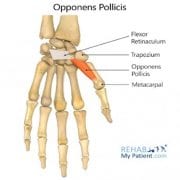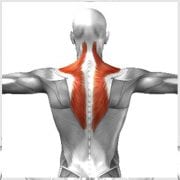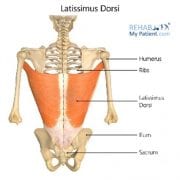Your suboccipital muscles are small, deep muscles that connect your head to your neck. They help perform actions such as turning your head or extending it (looking up). They also help laterally flex your head, which is like when you are eating something and your dog would really like a bite. They do this cute little tilting of their head to the side, and if you are anything like me it works out for the dog 100% of the time. SO CUTE.
Anyway, back to the muscles. Although they perform these movements, their primary role for us is actually- proprioception, which is position awareness.
We will get more into the importance of this later.
Now, let’s talk muscle spindles. Muscle spindles are stretch receptors within a muscle that sense muscle length and changes in muscle length. This helps us control our movements and posture. The suboccipital muscles have a high muscle spindle density.
The tables below show how the suboccipital muscle densities compare with other muscles in our body.
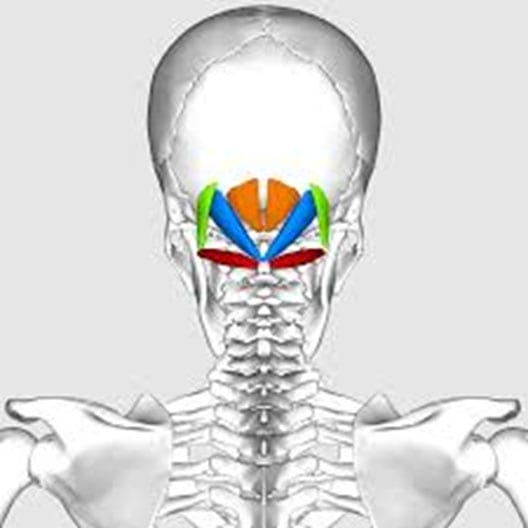
| SUBOCCIPITAL MUSCLES | MUSCLE SPINDLES PER GRAM OF MUSCLE TISSUE 1 |
|---|---|
| Inferior Oblique | 242 |
| Superior Oblique | 190 |
| Rectus Capitis Posterior Major | 98 |
| Rectus Capitis Posterior Minor | 98 |
DRY NEEDLING TO IMPROVE PROPRIOCEPTION
As you can see, the suboccipital muscles have much greater muscle spindle density than some of the other smaller or even larger muscles of our body. This is important in their role of relaying proprioceptive information to the Central Nervous System, helping control head-eye coordination and head position/movements.
Dry needling is one way to treat these suboccipital muscles to help improve proprioception. It is called a “dry” needle because it is a solid needle, you are not injecting anything into the body or taking anything out. The treatment involves the insertion of a thin filament needle into soft tissues such as muscle “trigger points”, fascia, tendons, and ligaments. Dry needling increases blood flow to the area, stimulating the healing process of these soft tissues, decreasing pressure on your occipital nerves, leading to better postural awareness.
Here is an example showing improvement in proprioception following physical therapy treatment with dry needling.
I had the patient wear a headlamp with a laser pointer. The patient centers the laser on a target on the wall. The patient closes their eyes, turns their head all the way to the left and then returns to where they feel like the center of the target is (still with their eyes closed) and I mark that point.
This is repeated at least two more times. I also have them go to the right, up and down. In this clinic example, the peach color markings were prior to treatment and the blue were post-treatment.
As you can see, following treatment the patient was much more accurate.
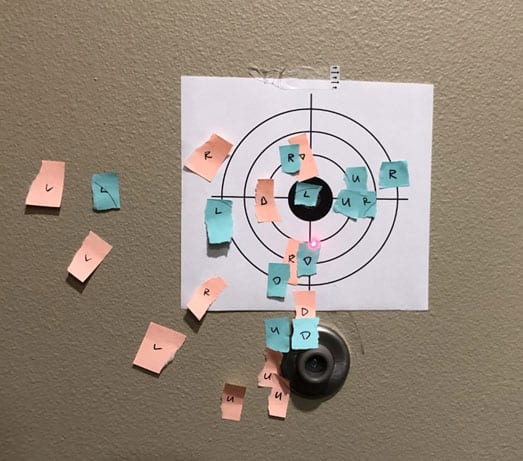
People often think about dry needling as a way of decreasing muscle tension and pain.
I hope by reading this you will now also think about the proprioceptive benefits dry needling may have and how that plays an important role in postural awareness.
References
[1] Kulkarni V, Chandy MJ, Babu KS. Quantitative study of muscle spindles in suboccipital muscles of human foetuses. Neurol India. 2001 Dec;49(4):355-9. PMID: 11799407.
Reach out to Apex Physical Therapy and Wellness to book your dry needling session.

